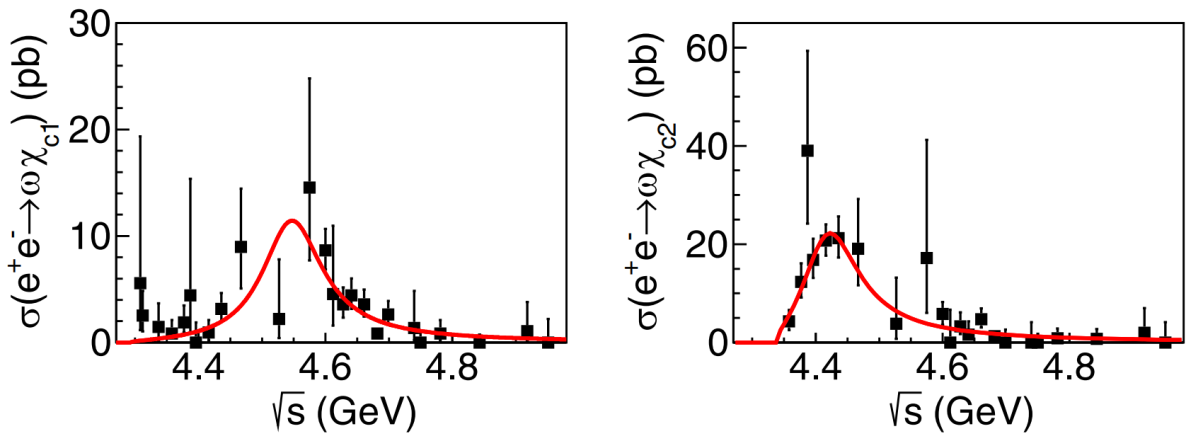The BESIII collaboration recently reported the observation of two resonance structures in the processes e+e-→ωχc1 and e+e-→ωχc2. One structure is likely to be the well-established resonance ψ(4415), and another is observed for the first time. The results have been published in Physics Review Letters on April 19, 2024 [Phys. Rev. Lett. 132, 161901 (2024)].
In 1964, both Gell-Mann and Zweig proposed the famous Quark Model. It tells us hadrons are composite particles and fall into two classes: baryons, composed of three quarks, and mesons, bound states of a quark–antiquark pair. In the past decades, the Quark Model is successful in describing most hadrons observed in experiment. However, in recent years there are many new particles discovered in the charmonium energy region, such as X(3872), Y(4230), and Zc(3900). These states, comprised of charm-anticharm quark pairs, do not fit in the conventional charmonium spectroscopy and could be exotic states. Some theoretical models interpret these as charmonium hybrids, tetraquark states or molecule states. More experimental measurements are needed to understand the nature of these states.
In this work, the e+e-→ωχc1,2 cross sections are measured at the center-of-mass energies from 4.308 to 4.951 GeV at the BESIII experiment. For each process, a nontrivial feature is observed in the cross section line shape. Under the assumption that one single resonance describes the corresponding shape, the mass and width for e+e-→ωχc1 are determined to be M=(4544.2±18.7±1.7) MeV/c2 and Γ=(116.1±33.5±1.7) MeV. This structure is observed for the first time with a significance of 5.8σ. The mass is significantly higher compared to the structures recently observed around 4.480 GeV/c2 in e+e-→K+K-J/ψ and e+e-→D*0D*-π+. It is yet unclear whether or not these two states are the same based on the currently available information, and further measurements with higher precision in this energy region will be necessary. For the e+e-→ωχc2 process, the extracted parameters are M=(4413.6±9.0±0.8) MeV/c2 and Γ=(110.5±15.0±2.9) MeV, suggesting that this is likely the well-known ψ(4415) and implying the existence of the hidden-charm decay ψ(4415)→ωχc2.

FIG. 1. Fits to the cross sections of e+e-→ωχc1 (left) and e+e-→ωχc2 (right), two structures are observed.
Further reading:
PRL publication link:
https://link.aps.org/doi/10.1103/PhysRevLett.132.161901arXiv link:
https://arxiv.org/abs/2401.14720


